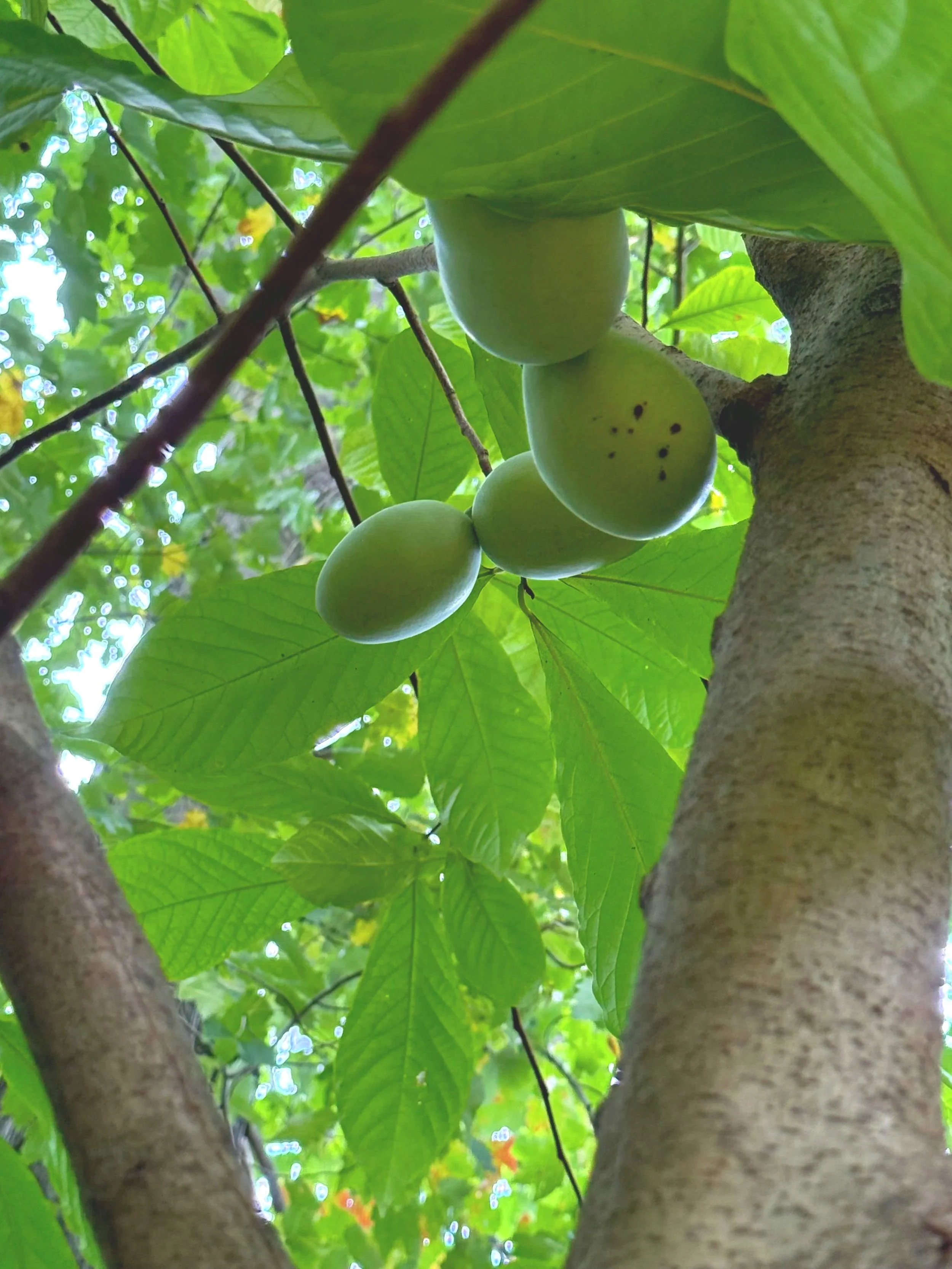Paw Paw Patrol
The Rye Nature Center may not have an orchard for apple picking, and though we do have a fair bit of wild grapevine growing throughout the property, the extremely sour taste would not agree with most of our taste buds. There is one fruit-bearing tree that grows on our property that we are very proud to host: The American Paw Paw (or Asimina triloba).
Almost ready to pick!
The paw paw is the East Coast’s only native tropical tree, and it produces the largest edible fruit in the United States. Despite its impressive size, FRNC’s staff is split on the fruit’s taste and texture — some love its custardy sweetness, while others find it unusual.
Due to the fruit’s very short shelf life of about one to two days, paw paw cannot be produced for commercial use. If you'd like to try some for yourself, your best bet is to find a local grower. You could also try to find paw paw jam at a nearby farmers’ market. You can thank Kris Karpinia, Director of Public Programs, for this tip. He also recommends getting to know these vendors because, as he states, they must either have a connection to a paw paw grove or have their own trees.
Overhead shot of our massive paw paw!
Our garden has been home to several large paw paw trees since 2013 when then Conservation Director, Taro Ietaka, planted them for their rarity and utility as a shade-tolerant understory tree. Since then, these trees have sprouted countless fruits and seedlings. To spread the paw paw wealth, our Conservation Director, Jax, has reached out to every contact he has to find new homes for these seedlings. By his estimates, over 200 seedlings and 300 seeds have been donated to 21 different organizations for even more restoration projects. We can attest that people have been coming out in droves for their chance to bring paw paws to their neck of the woods.
We spoke with Jax briefly to find out the source of personal interest in helping propagate paw paw trees.
“Many forests along the East Coast are struggling with understory regeneration because of deer browse and invasive species. The paw paw is remarkable because it thrives in shade, resists deer and small mammals, and still provides an important food source for wildlife. Its leaves and twigs contain compounds that deter most insects and browsers, yet those same compounds make it the only food source and host plant for the zebra swallowtail butterfly. By ingesting these compounds as caterpillars, zebra swallowtails carry a built-in defense against predators even after they become butterflies.”
If this article has you feeling like you missed out on the paw paw party, no worries! Our conservation team will have a new batch of paw paws to share next year. Contact jax@ryenaturecenter.org for more info!
Our paw paw champion!



